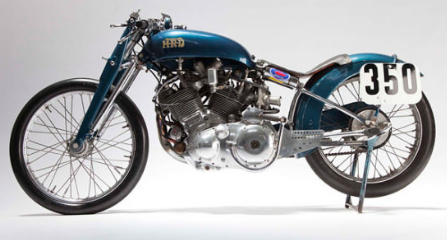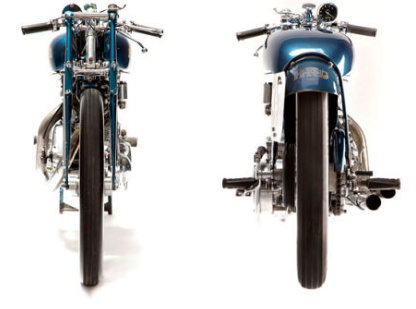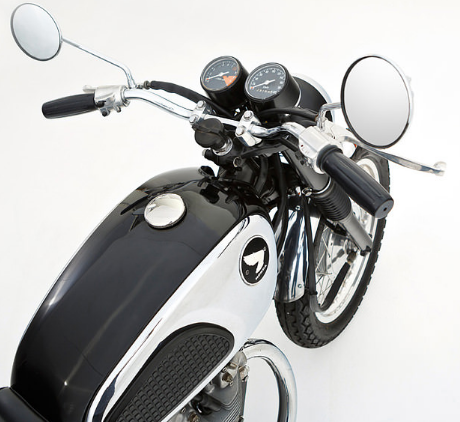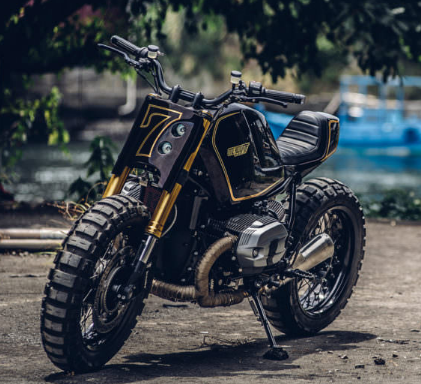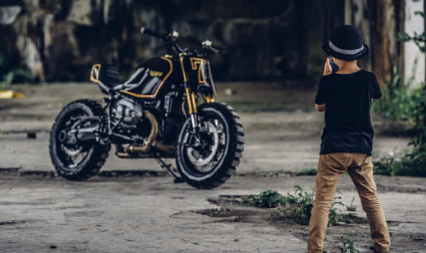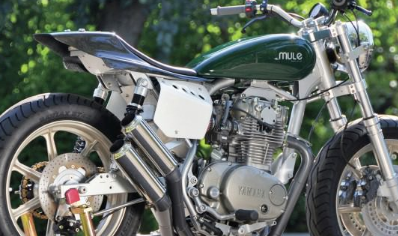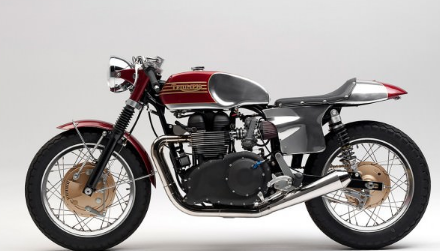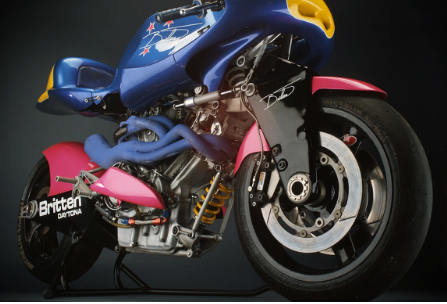The primary feature on ‘the way to construct a Café Racer’ struck a chord. Now not all of us who read it agreed with the content, but in relation to fashion, there are numerous unique faculties of flavor.
I’m going to cognizance at the performance side of building a café racer. Or street tracker, scrambler, or any
custom motorbike, for that be counted. Allow’s start with the aid of picking the proper bike up the front to keep away from steeply-priced errors down the song.
Twelve Ways And STEP Build A Cafe RACER
1. Pick your weapon. The most lower priced bikes to customize are the motorcycles that time and fashion forgot, and plenty of are japanese. That means the Honda CBs, inside the 350, 360, 500, 550 and 750 capacities.
Yamaha has the XS collection, in 360, four hundred or 650 capacities. Forget the
XS500 or
TX500, unless you’ve were given lots of time and money. Then there’s the
SR400 and
SR500, and even the Viragos at the moment are getting lots of interest.
From Kawasaki, you may pick a Z of any length. But it turned into Suzuki that produced some of the best air-cooled inline fours, like the GS750/countless numbers—that's why Pops Yoshimura gave them so much love. And why you notice hardly any for sale these days
STEP By Step Build A Cafe RACER
2. Recognize the issues. Some of these
motorcycles will maximum probably have the equal issues, because they had been all synthetic at least 30 to forty years in the past. We’re talkin’ approximately the 70s, while motorcycles had been gaining strength with each new version 12 months but the handling become lagging in the back of.
By 1972-73, almost each motorcycle changed into wearing a disc brake up front. Consumption noise was nevertheless audible, and most wheels had twine spokes. Shocks had been more often than not chrome spring holders, and coffee-putting mufflers and centerstands triggered lots of sparks (and crashes) whilst cornering at velocity.
Lessons have been learned and upgrades have been made. Because the motorcycles had been driven to their performance limits on the racetrack, enhancements regularly made their way into production models. These instructions, tricks, new components and tuning secrets have because persevered to collect, so we now have a large pool of know-how.
I should point out it’s always an excellent idea to pick a motorbike that has decent components availability—plus a large choice of o.E.M chocolates. Setting a whole lot of effort into a motorbike that you may’t even buy a head gasket for is the start of a irritating adventure.
3. After your buy. Let’s say you bought a 70s motorbike cheap, with the cause of constructing some thing without a doubt cool to dazzle your buddies. Perhaps you’ll ride it every day to paintings or college too.
After many nights within the garage, the motorbike runs respectable and you’ve accomplished all of the things that everybody else does to make your bike appearance cool. However you’re starting to assume, “Wow! This factor is sort of a gradual, wobbly forty-year-antique buckboard.”
when you move for a lively ride in the hills along with your pals, perhaps the motorbike isn’t all that interesting or self assurance inspiring. Or it’s simply undeniable hazardous. Or maybe there are a couple of guys with bikes from the 80s or maybe the 90s disappearing over the horizon. You’re thinking, “It’s were given to get higher than this!”
unfortunately, motorcycles were improving at an exponential price during the last thirty years. However you’re devoted to riding your 70s motorcycle, and want to be able to mention you constructed it yourself. It’s time to improve it, while keeping a practical view of how a whole lot you could enhance it before you’ve depleted your assets.
4. Make a plan. You’re gonna want a few things. Starting with a route and accumulating expertise is a need to. What can you have the funds for? What need to you do? How do you find out, and whom can you ask?
If you seek the internet and take a look at photographs of 70s racing machines and hotted-up avenue bikes, you’ll discover clues. The stance become commonly modified, as have been the tires. Aluminum rims replaced steel, and usual aftermarket shocks and fork kits had been set up. You often noticed braided stainless brake strains and a 2nd front disc and caliper. Frames were closely gusseted, and so had been swingarms—or they have been upgraded with aluminum gadgets.
In the engine/overall performance branch, you’ll want to dig a little deeper: pics will show only the external mods. You’ll observe air cleaners, larger and better carbs and exhausts, and perhaps a few form of oil cooler. To get an insight into internal mods, you’ll want to read articles from vintage magazines that have hop-up guidelines pertaining on your motorcycle. And then look for those parts at swapmeets or on eBay if they're now not synthetic.
Another manner to acquire understanding approximately the older fashions is to attend a antique race or . There are lessons for all displacements and one of a kind eras. The regulations are generally supposed to hold the motorcycles period accurate, but maximum of the components wished are without difficulty available.
5. Get to work. All motorcycles like Honda CBs, the Yamaha XS and SR collection and Kawasaki Zs may be advanced with a standard institution of enhancements, starting with the chassis. Analyzing the frame for cracks or damage is the first step.
Element in tapered guidance head bearings or, as a minimum, replace the worn out stockers with new OEM bearings and races.
Most of the older bikes got here ready with a plastic swing arm bushing. This have to be replaced with a needle curler bearing kit in strong bronze or new-vintage-inventory ones.
Any other vicinity of situation would be the swingarm pivot shaft and reducing the side-to-aspect play of the swingarm all the way down to the manufacturing unit minimum spec. Up and down motion have to be without restriction, but facet-to-facet or axial play ought to be almost nonexistent.
6. Spend on suspension. It’s time to cut loose. Specifically, new shocks and a fork kit. Getting shocks from Öhlins, Racetech, Works performance, Hagon or modern Suspension can all be an improvement.
That stated, it’s truly crucial that the dampening and spring rates are matched as carefully as possible to the weight of you and your motorcycle, considering what type of driving you’ll be doing. Buying a call logo surprise that’s mismatched, already used, or designed for a race bike won't yield any improvement in any way.
I recognise that Racetech and Works will build shocks to precisely fit you. Lengthening the rear shocks eye-to-eye can get you more cornering clearance and higher flip-in for corners. However reducing the lower back end of the bike, as seen in lots of modern custom builds, has the opposite effect.
The identical goes for forks. Scoring a set of cool USD (upside-down) forks on eBay in no way ensures exact dealing with. But a fork spring and a dampening package (or Racetech emulators) can yield extremely good results with your stockers if they aren’t bent or rusted. You may even adapt higher forks to fit, probable from a extraordinary version of the identical emblem.
7. Add lightness. Some other manner to enhance the stock chassis is to lighten the wheels and in shape better brakes and tires. There can be a comparable version to yours that has a lighter, smaller rear hub, or a smaller and lighter disc.
Examine lacing up an aluminum rim, perhaps wider, that allows you to use a better tire. Firestones or knobblies to your avenue motorbike are a loud, clean sign that coping with within the corners is of no situation, and the opposite things I’ve mentioned to get the chassis to a better level may be for nothing.
8. Tires. Each tire producer makes rubber donuts within the 18” variety so as to supply right grip and notable transitions from vertical to leaned-over. Plenty of the 70s-generation bikes—nearly all except those within the sub 450cc variety—came with 19” front wheels. These mixed a steel rim with a big diameter, and commonly speaking, a miles greater ‘relaxed’ steerage head angle. This will increase the gyroscopic effect and leaves you with a motorcycle reluctant to lean or steer right into a nook.
9. Brakes. At the same time as we’re up the front, how about braided stainless brake traces and new pads? Discs can be swapped out for a larger disc from some other logo or version, or you may even swap the front hub for something that at the beginning came with discs.
Be aware: make sure you also choose up a brake master cylinder intended to push enough fluid for two calipers! Many older bikes had caliper lugs on both fork legs, but oddly no caliper turned into attached. While you go to the antique races, you’ll observe that most motorcycles will have been converted to aluminum rims with an 18” wheel on the the front and maximum probably a 2nd disc.
Different elements are the guidance head angle and triple clamp offset, which feed into the “path” part of the general package. That’s a dialogue for over again, but it’s a big issue in managing.
10. Get your timing proper. Ok, so now your motorbike goes instantly while you need it to. It doesn’t wobble and the brand new wheels and tires—being lighter—experience pretty darn right going into and thru corners. Not to say the twin discs slowing the bike down with much less attempt.
But if simplest it had extra electricity! Properly, the answer isn’t as apparent you’d anticipate. In the beginning, anyway. The men who've been a success at opposition over time don’t simply throw some trick issue on the motorbike and go faster. They keep the stock engines or modified engines in pinnacle situation for the duration of the yr.
They aren’t up all night time gambling world of Warcraft. They’re inside the garage setting the timing time and again till it’s perfect. Or resurfacing the pinnacle and cylinder, so with a brand new gasket, it received’t leak—ever.
So begin with the aid of ensuring the engine has precise compression on ALL cylinders. Check the points are in true situation, and the engine is timed efficaciously. The air purifier(s) need to be smooth, and the carbs jetted well—because you tossed the airbox and hooked up the cool “pods.”
11. Rebuilding the engine. Most bikes from the 70s are worn-out, pooped out and thrashed. A paintjob received’t get it down the road any faster. You can want to chunk the bullet with an engine rebuild, and once more, the vintage races can be your nice supply. The
Yamaha TT500s (with the same motor as the XT and
SR500s) are probable the maximum popular motorbike in all flattrack races, week in and week out. With a 540cc package, a Megacycle cam, a Sudco 36-38mm round slide carb package and pretty much any pipe, you’ve entered some other global of overall performance.
Equal with an XS650 Yamaha. A 750cc kit, Megacycle cam and some 34mm carbs—and CB750s look out! This is, unless your CB proprietor were given a warm cam, a 836cc large bore kit and some Keihin CRs while constructing his personal cafe racer, and paid attention to his chassis set-up.
12. Study from the hot rodders. The not unusual thread on these kind of bikes is giving a crap approximately the chassis set-up, getting the motor at least lower back as much as “Blueprinted” stock and then the use of all the standard warm rodding techniques racers have used since the inner combustion engine became invented.
Larger displacement, extra cam, better ignition structures, bigger/better carbs and you can even install exhaust structures that yield greater electricity and are still quiet. There are such a lot of parts to be had for the older motorcycles that have evolved during the last thirty years; the whole thing can just be purchased and mounted with vendors offering precise instructions and technical assistance.
Excellent success with the undertaking!!!

